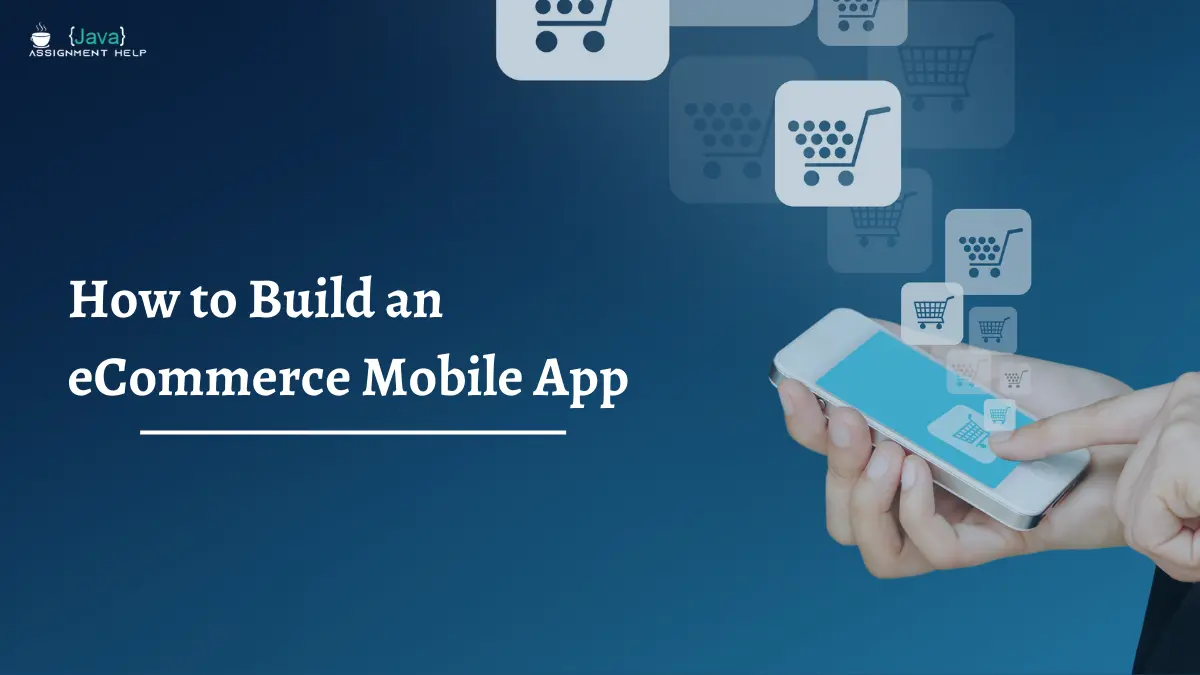In today’s digital world, having an eCommerce mobile app is no longer an option, it’s a necessity. With more and more people turning to mobile devices to shop online, having a mobile eCommerce app can give your business a significant competitive advantage. In this article, we will provide you with a step-by-step guide on how to build an eCommerce mobile app in 2023.
Let’s Discuss How to Build an eCommerce Mobile App
Step 1: Define Your Goals and Objectives
Before you start developing your eCommerce mobile app, you need to define your goals and objectives. What do you want your app to achieve? Do you want to increase your sales, improve customer engagement, or enhance your brand image? Once you have a clear understanding of your goals and objectives, you can start designing your app accordingly.
Step 2: Choose the Right Platform
There are two primary platforms for mobile app development – iOS and Android. You need to decide which platform you want to build your app on. If you have a limited budget, you may want to consider building your app on one platform first, and then expanding to the other platform later on.
Step 3: Select the Right Development Tools
There are several development tools available in the market that can help you build an eCommerce mobile app. Some of the popular ones include Flutter, React Native, and Ionic. You need to select the right development tool based on your budget, timeline, and expertise.
Step 4: Design Your App
The design of your eCommerce mobile app plays a critical role in attracting and retaining customers. You need to ensure that your app has an intuitive and user-friendly interface. The design of your app should be consistent with your brand image and reflect your company’s values.
Step 5: Develop the App
Once you have finalized the design of your app, you can start developing it. You need to ensure that your app is optimized for performance and speed. Your app should also be compatible with different screen sizes and resolutions.
Step 6: Test Your App
Testing is an essential part of the app development process. You need to ensure that your app is free of bugs and glitches before you launch it. You can use various testing tools and techniques to test your app.
Step 7: Launch Your App
Once you have tested your app, you can launch it on the app store. You need to ensure that your app meets all the app store guidelines and requirements. You also need to promote your app to your target audience through various marketing channels.
Step 8: Monitor and Improve Your App
Your work doesn’t end once you launch your app. You need to monitor its performance regularly and make improvements based on user feedback. You can use various analytics tools to track user behavior and identify areas for improvement.
In addition to the step-by-step guide outlined in the previous section, there are several other important factors to consider when building an eCommerce mobile app. These include research, expert opinions, and industry trends.
You May Also Like To Read: Tips To Choose The Right App Developer For Your Business Goals
Research
Research is a crucial part of building a successful eCommerce mobile app. By conducting research, you can gain valuable insights into your target audience, their preferences, and their behaviors. This information can help you design an app that meets their needs and expectations.
According to a study by Statista, global mobile eCommerce sales are projected to reach $3.56 trillion by 2021. This highlights the importance of having a mobile eCommerce app in today’s digital age. The study also found that the most popular mobile shopping categories include apparel, electronics, and beauty products.
Another study by Adobe found that mobile devices accounted for 53% of all eCommerce visits in 2020. The study also found that the average order value (AOV) for mobile devices increased by 9% compared to desktop devices. This underscores the importance of optimizing your app for mobile devices to improve user engagement and increase sales.
Expert Opinions
To gain a deeper understanding of the mobile e-commerce app development process, it’s also important to seek out expert opinions. According to Areeba Khan, a digital marketer at Fincyte, there are several key factors to consider when building an eCommerce mobile app. These include:
- User experience: The user experience is critical to the success of your app. You need to ensure that your app has a simple and intuitive interface that is easy to navigate.
- Speed and performance: Your app should be optimized for speed and performance to provide a seamless user experience.
- Security: Security is a major concern for eCommerce apps. You need to ensure that your app is secure and that user data is protected.
- Personalization: Personalization can help improve user engagement and drive sales. You should consider offering personalized recommendations and offers based on user behavior.
Industry Trends
The eCommerce industry is constantly evolving, and it’s important to stay up-to-date with the latest trends and technologies. One of the biggest trends in eCommerce mobile app development is the use of artificial intelligence (AI) and machine learning (ML). AI and ML can help improve the user experience by offering personalized recommendations and improving search functionality.
Another trend in eCommerce mobile app development is the use of augmented reality (AR) and virtual reality (VR) technology. AR and VR development company can help enhance the shopping experience by allowing users to visualize products in real-world environments.
Conclusion: How to Build an eCommerce Mobile App
Building an eCommerce mobile app requires careful planning, research, and execution. By following the step-by-step guide outlined in this article and considering expert opinions and industry trends, you can build a successful eCommerce mobile app that meets the needs and expectations of your target audience. Remember to stay up-to-date with the latest technologies and trends to stay ahead of the competition and provide a seamless user experience.

